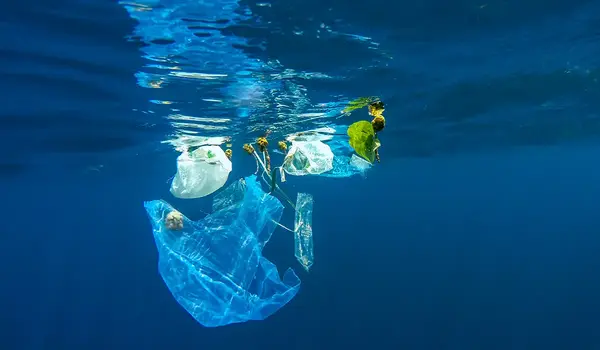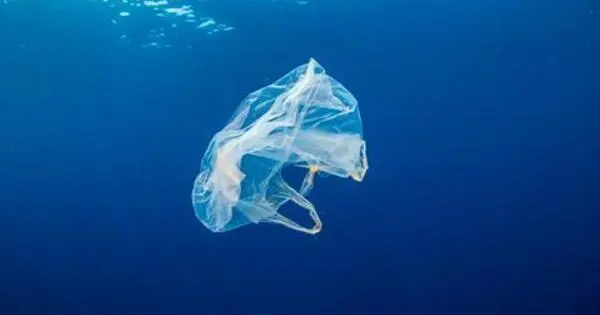Microplastic (MP) contamination is a global issue. Despite this, no standard method exists for assessing MP concentrations in rivers, which are the primary entry points for MPs into oceans. As a result, arbitrary sampling and inaccurate assessments occur. Researchers have now proposed a method for determining the number of samples required for an accurate assessment of freshwater MP concentration. The method has the potential to significantly reduce the time and resources spent on MP surveys.
The extent of plastic pollution is largely concealed in the form of microplastics (MPs), which are plastic particles with diameters less than 5 mm. Because plastics degrade slowly, they fragment into tiny particles that contaminate entire ecosystems. MPs have become a ubiquitous and global concern in the years since their discovery in the early 1970s. MPs can be found in the land, air, and water, as well as in the food we eat, particularly seafood. This is due to the fact that freshwater sources, such as rivers, frequently carry MPs into the oceans, where they accumulate.
Despite its widespread use, there is currently no standard procedure for measuring and quantifying MP concentration in rivers. Plankton nets, which were originally designed to collect plankton samples, are now commonly used to catch MPs in rivers. Multiple samples are collected at fixed locations along the river to prevent these nets from becoming clogged and to ensure a large sample size, and the MP concentration is calculated as the average of all the sampling results. Most studies, however, fail to account for uncertainties and sampling errors, resulting in an incorrect assessment of MP concentrations, particularly in terms of the sample amounts required for accurate MP assessments.
For an on-site sampling of microplastics, we have proposed a method for determining the appropriate number of iterations in each contamination situation. It turns out that the numerical concentration ranges of riverine microplastics overlap with those of zooplankton
Dr. Tanaka.
Now, in a recent study published in Environmental Pollution, Dr. Mamoru Tanaka and Professor Yasuo Nihei from Tokyo University of Science along with Associate Professor Tomoya Kataoka from Ehime University in Japan have improved upon the estimation of the MP concentration by accounting for the variability between estimations obtained from different samples. The variance can help estimate the appropriate number of samples required for an accurate representation of MP contamination. “For an on-site sampling of microplastics, we have proposed a method for determining the appropriate number of iterations in each contamination situation,” says Dr. Tanaka.
Additionally, the variance can provide insight into how MPs are distributed in the waterbody. For instance, if they are uniformly distributed in the river, the variances between the samples would be low. On the other hand, a high variance would indicate a non-uniform clumped distribution.

To evaluate the inter-sample variances in MP concentration, the scientists borrowed another method originally intended for zooplankton. “It turns out that the numerical concentration ranges of riverine microplastics overlap with those of zooplankton,” explains Dr. Tanaka, regarding the similarity of both the sampling procedure and the concentration estimations between MPs and zooplankton. According to this method, the inter-sample variance is proportional to the average or mean of the concentration estimations.
The team collected 10 samples in plankton nets along the Ohori River and Tone-unga (Unga) canal in Chiba, Japan, for the MP concentrations – two waterbodies that flow through urban areas and contain a high concentration of plastic waste. At the sampling sites, they discovered a total of 1333 MP particles. The average concentrations of MPs measured in the Ohori were 5.23 particles/m3 and 15.22 particles/m3 in the Unga, which were higher than the reported average of MPs in Japanese rivers (4.3 particles/m3).
Furthermore, the calculated averages and variances for both locations corresponded to a simple linear regression. “Variance steadily increased with an increase in mean numerical concentrations,” Dr. Tanaka observes. Regression analysis further suggested that the MPs in the rivers do not interact with one another, resulting in random particle distributions.
Most importantly, the team discovered that at high MP concentrations, two replicate samples are sufficient to accurately measure MP concentrations. “We discovered that for conditions with high concentrations of more than 3 particles/m3, the mean of two replicates maintained sufficient precision of less than 30%,” says Dr. Tanaka.
MPs have been identified as a problem in recent years, and several countries, including Japan, have passed legislation to improve monitoring and control of MPs in the environment. In this light, this study could aid in the improvement of sampling methodology, thereby reducing the time and resources spent on MP assessment surveys.





